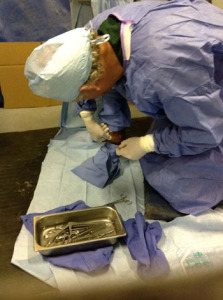Prostride and Soft Ankles
Every year I have a number of young thoroughbreds whose ankles start bugging them. They get round in shape, they get a mild to moderate joint effusion and generally are not lame or sore to
flexion. Click here to read more.
Tendonitis
As you might be well aware I’ve enjoyed great success with my acupuncture decompression of
tendons and ligaments. But I’ve had limited exposure to treating what I call tendonitis. Click here to read more.
Bisphosphonates
Probably the hottest topic in medications today is Bisphosphonates such as Osphos and Tildren. These class of drugs were formulated to prevent osteoporosis or loss of bone in elderly people. Click here to read more.
Legs and The Performance Horse
People often wonder how a horse talks to you. Well the really astute horse whisperer type might look deep into their eye. And the eye usually does communicate some form of happiness. But generally for the veterinarian and the performance or racehorse its the physical exam. And most notably the legs. Click here to read more.
Anhidrosis (Non-Sweaters)
Tiz The Season! Chances are if you have a thoroughbred in training in Florida During the summer you have a 20% chance of it becoming a non-sweater. (Based on an epidermiological study performed by Mayhew and Ferguson and published in 1987) Click here to read more.
Coffin Joints and Hocks: Sometimes Quick Success
It seems like Standardbred trainers and Veterinarians have played a large role in teaching me some lameness issues, directly and indirectly. I suppose part of it is the trainer is generally sitting right behind the horse. He is up close to a lameness issue. The standardbred also trains on a pretty hard surface which provides for more chronic traumatic jarring type soreness as opposed to the many acute lameness issues thoroughbreds can have. Continue reading.
Ice and Arthritis
True story: one day I am hiking the mountains of western Montana and standing at the top of one wondering why so many of the trees are dead. I hear a thunderstorm in the distance and realize I a standing on the top of a lightning rod and that is why all the trees are dead! Continue reading.
Foot Abcess
Years ago working on the farm (Hobeau) and taking care of over a hundred barren and maiden mares I quickly became acquainted with foot abscesses. Having no formal, or for that manner, any training in how to approach and care for these I quickly learned that for the most part they take care of themselves. The horse usually shows a progressive 2-4 day lameness, is three legged lame one day, and almost sound the next day with a usual discharge from the coronary band. Continue reading
The Endoscope Exam
A horse that can’t breath can’t run. So there are some conditions that can be readily identified as
problematic on a standing endoscopic exam. However a very high percentage of horses appear
to be sound of wind on this exam. Other clinical problems are most readily identified either by
listening to a horse gallop or breeze, or by doing dynamic endoscopy where the horse is scoped
while galloping. Continue reading
Dr. Ferguson’s Summary of OBS Medication Changes
In an effort to enact ARCI medication guidelines before legislative action this spring, OBS has changed some of its medication protocols. Other changes are forthcoming in later sales that will conform to ARCI guidelines across the board. Continue reading
Bleeding in the Racehorse: A Study by H. O. Ferguson, DVM
Bleeders, Allergies, Allergy Testing, Immunotherapy and the Racehorse
Dr. Sam Ferguson of Ocala, Florida, is teaming up with interested racehorse trainers and owners to perform a scientific study and clinical trial exploring the possibility of an association between allergies and bleeding from the lungs (EIPH) in horses. Dr. Ferguson has worked on the track with and without the use of the current medication, lasix, and strongly feels that medication issues are a large detriment to the racing industry today. He also feels that in many instances our healthcare system looks for the income from a treatment, rather than research a cause of the problem. Following is a brief synopsis of EIPH (bleeding) and its possible correlation to allergies. Continue reading
Tendon and Suspensory Study
Dr. Ferguson, drawing on his experience and penchant for exploration, has developed a unique, simple, and inexpensive way to help some tendons and suspensory ligaments heal in a very accelerated fashion. The key is to enable the inflammatory fluid that is present with all tendon and suspensory injuries to escape the tendon. This inflammatory fluid holds destructive enzymes and acts as a matrix for scar or fibrous tissue, as opposed to the normal tendon tissue, which is elastic. Continue reading
Standing Arthroscopic Surgery

Standing horse undergoing the procedure
Although the concept of standing arthroscopic examination and surgery is not new in the horse, recent technological advances have made the concept more feasible. Older more conventional equipment consists of a large bank of equipment with multiple hoses for lavage and light sources. The arthroscope itself is also relatively large.
More recent specially designed equipment is extremely streamlined and the arthroscope itself is no larger than an 18-gauge needle. These scopes are commonly called “needle scopes.” Continue reading

